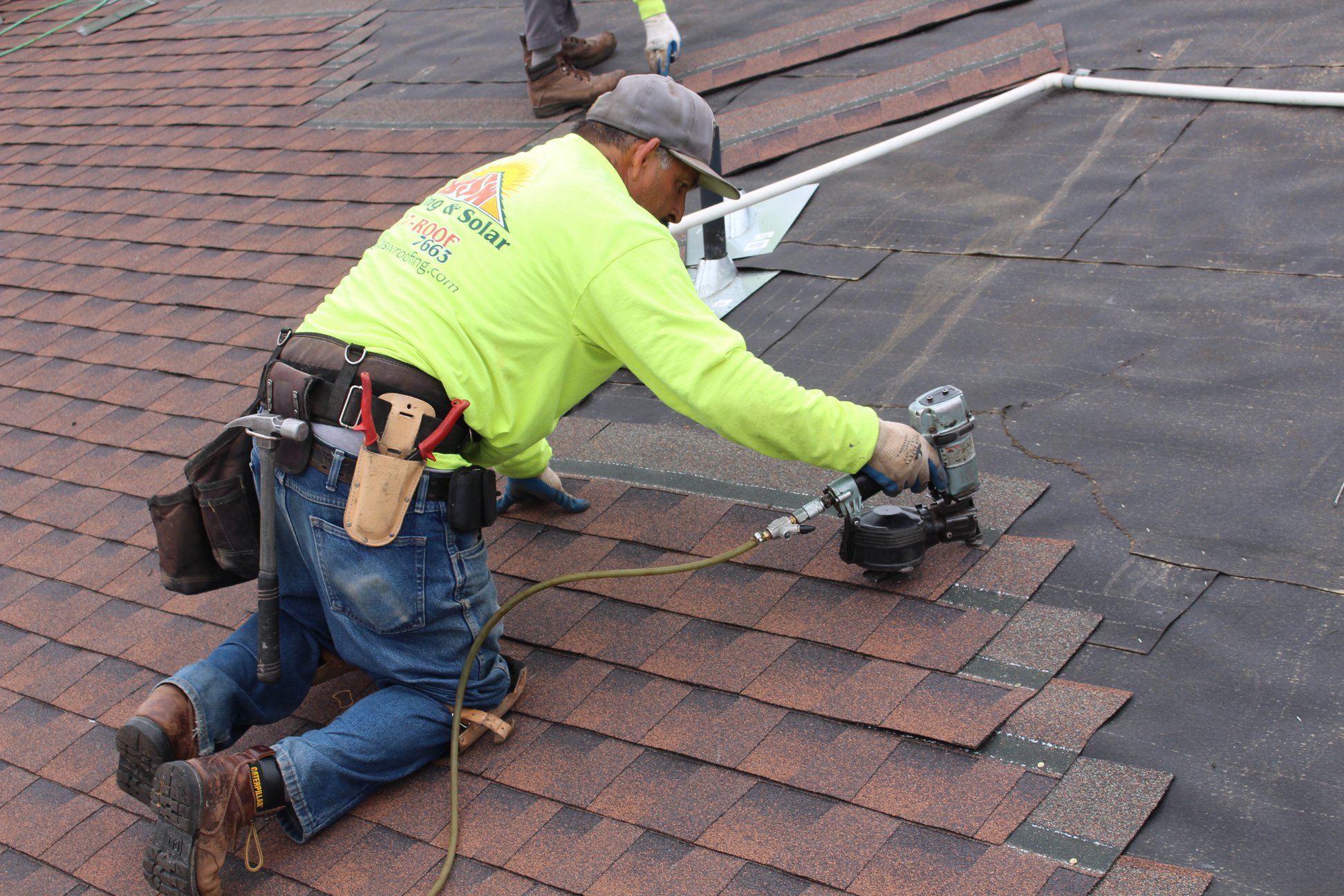Individual Reviews on the most effective Gainesville FL Roofing Companies Offered
Finest Practices for Ensuring Proper Roof Ventilation
Ensuring correct roofing ventilation is important for the long life and performance of a roof. A balanced consumption and exhaust air vent proportion, commonly 1:300, plays a critical role, with intake vents preferably positioned at the lower side of the roofing for amazing air entry and exhaust vents at the optimal for cozy air leave. Normal examinations to identify obstructions and keep clear air movement are extremely important. Maintaining insulation away from vents is vital to protect against air movement restriction. Understanding these foundational components sets the phase for even more thorough insights right into installation and maintenance techniques that can considerably boost your roof's performance.
Understand Ventilation Essentials
Correctly recognizing air flow fundamentals is essential for making certain the durability and performance of roofing systems. Reliable air flow mitigates moisture accumulation and temperature extremes in the attic, both of which can result in considerable architectural damages with time. A well-ventilated roof covering helps in stopping usual issues such as mold growth, wood rot, and ice dams, which can endanger the integrity of the roof materials and the underlying structures.
The primary goal of air flow is to help with the movement of air, permitting a constant exchange in between the interior and outdoor environments. This equilibrium is accomplished via a combination of intake and exhaust vents that work with each other to preserve optimal air flow. Consumption vents, generally located along the eaves or soffits, permit fresh air to get in the attic area, while exhaust vents, usually positioned at or near the roof covering ridge, enable hot, moist air to leave.
Trick aspects affecting the performance of roof air flow include correct positioning, ample sizing, and making sure that both intake and exhaust vents are unobstructed. Routine inspection and upkeep are critical to identify possible obstructions, damage, or ineffectiveness in the ventilation system, thereby protecting the roof's efficiency and durability.
Kinds Of Roof Vents
Roof covering vents play a vital function in preserving efficient attic room air flow and, by extension, the overall health and wellness of the roofing system. Different types of roof covering vents are available, each with distinct advantages tailored to certain roof covering requirements.

Soffit vents are mounted under the eaves and operate in tandem with roofing system vents to guarantee a balanced intake and exhaust system. By permitting cooler air to go into from below, soffit vents assist in the expulsion of hot air with top vents. Gable vents, situated on the exterior wall surfaces of the attic room, offer one more reliable remedy, especially in homes with gable roofs.
Examine Your Current Ventilation

Next, take into consideration the age and problem of your roofing materials and air flow components. Older systems may not follow current building regulations or may have weakened with time, minimizing their performance. Conduct a complete evaluation to recognize any kind of indications of damage, such as corrosion, damages, or spaces that could jeopardize the system's efficiency.
Additionally, determine the attic temperature and moisture levels. Heats and humidity can indicate insufficient ventilation - gainesville fl roofing companies. Make use of a hygrometer and thermometer to acquire exact readings, contrasting them with outdoor problems. Consistent disparities suggest potential issues that need resolving.
Installation Best Practices
Reliable installment of roofing air flow systems is paramount for ensuring ideal performance and durability. Proper installation begins with recognizing the certain ventilation needs of the building and the roof it covers. This includes determining the proper proportion of consumption to tire vents, generally adhering to the 1:300 rule, which stipulates one square foot of ventilation for every single 300 square feet of attic floor space.

The placement of vents is equally critical. Intake more helpful hints vents need to be installed at the roof covering's lower side, typically in the soffits, to enable awesome air to get in. Exhaust vents, on the other hand, ought to be installed near or at the roof covering's top to help with the exit of cozy, wet air. This creates a natural air movement that helps keep temperature level and dampness balance within the attic room.
Seal all vent connections diligently to stop air leaks and prospective water seepage. Usage high-grade materials and adhere to supplier guidelines to make certain resilience and efficiency. In addition, integrating ridge vents with baffles can significantly enhance airflow effectiveness by preventing wind-driven rain and snow from getting in the attic.
Eventually, accurate setup of roof covering ventilation systems reduces potential concerns such as mold growth, ice dams, and architectural damages, making sure the roofing's honesty and the building's total health.
Routine Maintenance Tips
Uniformity in upkeep practices is basic to ensuring the long-term performance of roofing air flow systems. During these examinations, make sure that vents are cost-free of particles, nests, and various other blockages that can impede airflow.
Use a soft brush or a vacuum to get rid of dirt and debris from intake and exhaust vents. Be careful not to damage the vent screens or louvers throughout the procedure.
Proper insulation is similarly essential. Guarantee that attic room insulation does not block the vents, as this can seriously limit air flow. Rearrange or replace it to keep an efficient obstacle. if any type of insulation has moved or worked out.
Finally, replace any harmed or missing elements promptly. Busted vents, split shingles, or tatty blinking can all add to this poor air flow and must be resolved without hold-up. Routine upkeep makes certain that the roof ventilation system functions ideally, consequently prolonging the lifespan of the roof covering itself.
Conclusion
Guaranteeing proper roof covering air flow is extremely important for keeping the effectiveness and sturdiness of a roof system. Adherence to the 1:300 consumption and exhaust vent ratio, combined with the calculated placement of vents, is necessary.
A well balanced consumption and exhaust air vent ratio, frequently 1:300, plays a critical function, with intake vents ideally positioned at the lower side of the roofing system for amazing air access and exhaust vents at the height for cozy air departure. Consumption vents, usually located along the eaves or soffits, enable fresh air to get in the attic room space, while exhaust vents, additional reading commonly located at or near the roofing ridge, make it possible for hot, moist air to escape.
Soffit vents are mounted under the eaves and work in tandem with roof covering vents to ensure a well balanced consumption and exhaust system. By enabling cooler air to enter from below, soffit vents assist in the expulsion of warm air through top vents. Adherence to the 1:300 intake and exhaust vent proportion, combined with the critical placement of vents, is necessary.